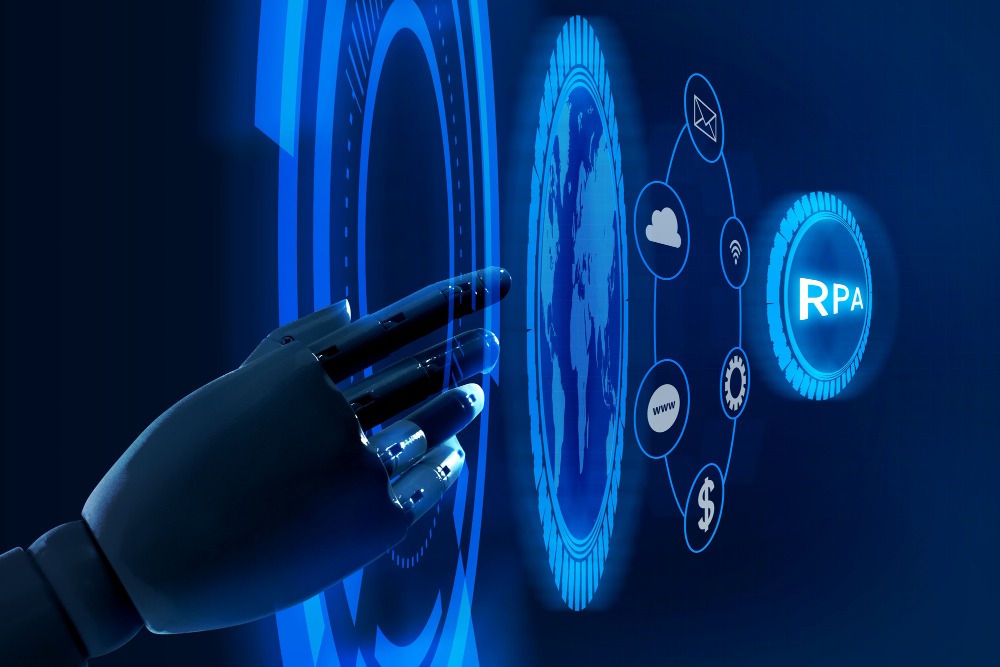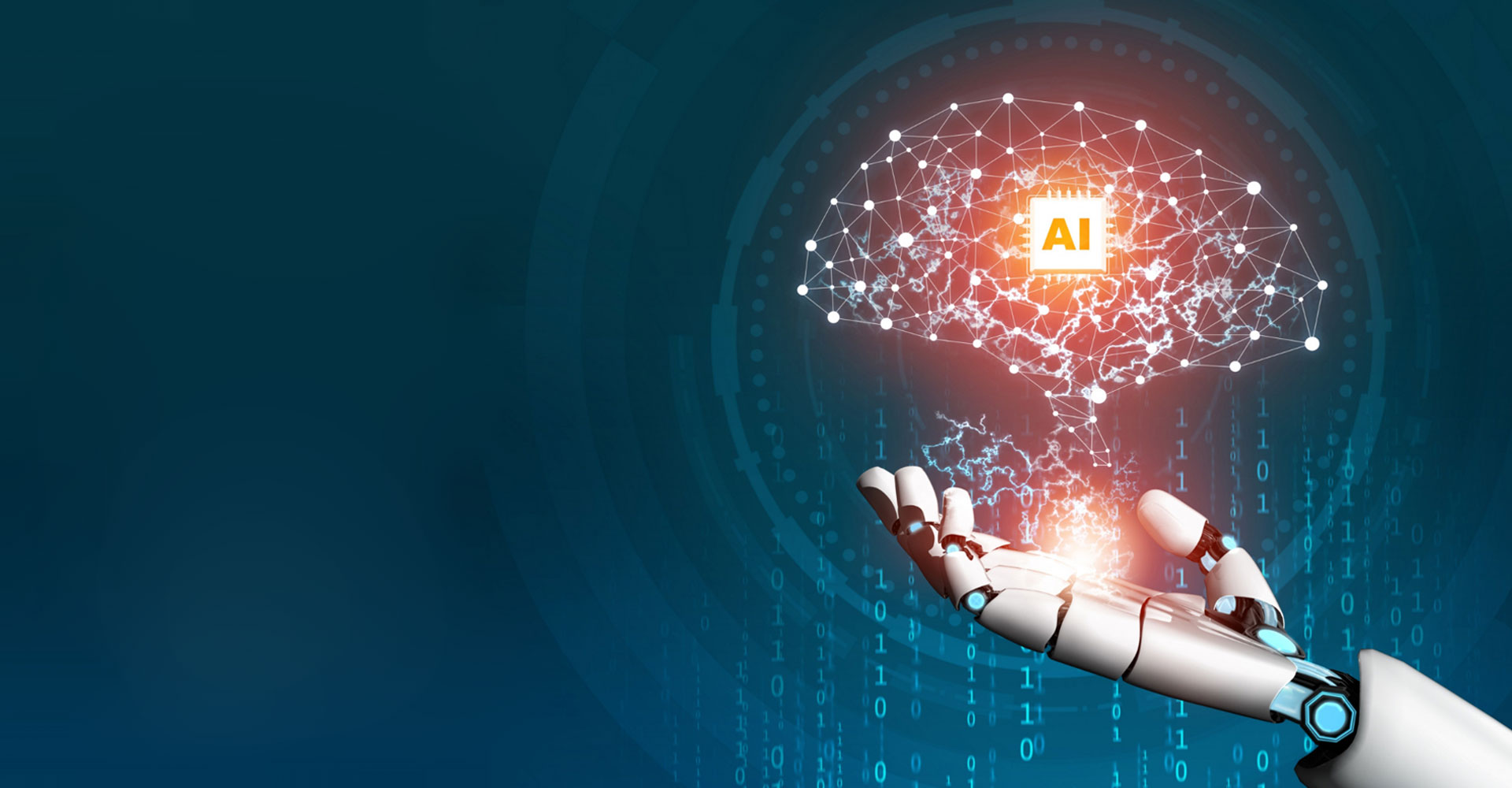The Future of Generative AI
In the rapidly evolving landscape of technology, Generative Artificial Intelligence (AI) stands out as a transformative force that is reshaping industries and pushing the boundaries of creativity and innovation. This burgeoning field is driving breakthroughs in machine learning and AI, promising a future where machines can independently generate creative and intelligent outputs. In this blog, we delve into the exciting trajectory of Generative AI, exploring its evolution, mechanisms, applications, and the profound impact it holds for the future.

- The Evolution of Generative AI
- Understanding Generative AI: Definition and Mechanisms
- Generative AI: Fueling Innovations Across Industries
- Generative AI: Illuminating the Path to Innovative Software Solutions
- The Future of Generative AI: Trends and Possibilities
- The Road Ahead: A Symbiotic Relationship with AI
- India's Rising Role in AI Innovation
- Conclusion
The Evolution of Generative AI
The roots of Generative AI trace back to the early exploration of neural networks and machine learning. With the introduction of Generative Adversarial Networks (GANs) by Ian Good fellow and his team back in 2014, the field witnessed a seismic shift. The team, composed of two neural networks – a generator and a discriminator – engaged in a creative duel, creating astonishingly authentic data outputs. This marked the dawn of AI, which could mimic human-generated content and produce it autonomously.
Understanding Generative AI: Definition and Mechanisms
At its core, Generative AI is the branch of AI concerned with creating new data instances. Advanced neural networks, including Variational Autoencoders (VAEs) and GANs, drive its mechanisms. VAEs are adept at encoding and decoding data, while GANs create content by pitting two networks against each other. The generator network attempts to create data resembling actual instances, while the discriminator aims to differentiate between accurate and AI-generated data. These networks refine their abilities through an iterative process, resulting in outputs that blur the lines between human and machine creation.
Generative AI: Fueling Innovations Across Industries
The landscape of technology is undergoing a remarkable transformation, and at the heart of this evolution lies Generative Artificial Intelligence (AI). This groundbreaking field reshapes industries, drives creative innovation, and redefines the human-machine dynamic. As we venture deeper into the 21st century, Generative AI is emerging as a force to be reckoned with, with profound implications for many sectors.
1. Empowering Healthcare Through AI
In healthcare, the impact of Generative AI is nothing short of revolutionary. The precision and efficiency that AI brings to medical imaging are changing how doctors diagnose and treat patients. By analyzing vast datasets of medical images, AI algorithms can spot minute anomalies that might escape the human eye. This leads to quicker, more accurate diagnoses, enabling medical professionals to tailor treatments to individual patients.
Imagine a scenario where radiologists collaborate with AI-powered tools to provide more accurate readings of X-rays, MRIs, and CT scans. The amalgamation of human expertise and AI’s analytical capabilities creates a synergy that promises enhanced patient care. From identifying tumors to predicting disease progression, Generative AI is a vital partner in the medical field’s ongoing mission to save lives.
2. Entertainment Redefined: AI’s Creative Touch
The entertainment industry is no stranger to innovation, and the integration of Generative AI is pushing the boundaries of creativity even further. AI-generated art, music, and literature are capturing audiences’ attention worldwide. Algorithms can analyze existing works, understand patterns, and generate original pieces that resonate with human emotions.
In the world of gaming, AI-driven advancements are transforming virtual experiences. Generative AI is used to create lifelike characters, realistic environments, and intricate narratives. Gamers are immersed in meticulously crafted virtual worlds, courtesy of AI’s ability to generate stunning visuals and dynamic storytelling.
3. Designing the Future with AI
Design, be it in architecture, fashion, or product development, is undergoing a metamorphosis fueled by Generative AI. Architects can now explore design variations swiftly and efficiently, leading to the creation of more innovative and sustainable structures. Fashion designers leverage AI to experiment with novel designs, material combinations, and aesthetic elements that push the boundaries of conventional trends.
Product designers benefit from AI’s generative capabilities, which accelerate the prototyping phase and facilitate rapid iteration. AI-generated design elements and prototypes provide invaluable insights, enabling designers to create functional and visually appealing products.
4. AI’s Impact on Finance and Beyond
Generative AI’s prowess is not confined to artistic and creative domains. In finance, AI’s predictive capabilities are proving to be game-changers. By analyzing historical data and market trends accurately, AI can forecast market fluctuations with impressive accuracy. Investors and financial experts rely on AI-generated insights to make informed decisions, minimizing risks and maximizing returns, and this will be the actual future of generative AI.
Furthermore, AI’s ability to detect fraudulent activities in real-time is revolutionizing the banking sector. AI algorithms meticulously analyze transaction patterns and identify anomalies that might indicate fraudulent behavior. This proactive approach is a significant leap forward in securing financial systems and protecting institutions and customers.
Generative AI: Illuminating the Path to Innovative Software Solutions
Amid the transformative landscape of technology, Generative Artificial Intelligence (AI) emerges as a beacon of innovation in the realm of software development. This dynamic fusion of creativity and code is redefining how software solutions are conceived, designed, and brought to life. As we navigate this intricate terrain, the role of Generative AI in shaping custom software solutions cannot be overstated.
- Revolutionizing Software Development Through AI
Software development, a cornerstone of the digital age, is undergoing a profound shift, driven by the integration of Generative AI. This groundbreaking synergy has the potential to streamline and enhance every phase of the development lifecycle. From ideation to deployment, Generative AI is a silent partner, infusing intelligence and innovation into the process. - Automating Code Generation: Speed and Efficiency Unleashed
A pivotal aspect of Generative AI’s impact on software development lies in its ability to automate code generation. Traditionally, developers invested significant time and effort in crafting lines of code that power applications. However, with Generative AI, this process is accelerated, enabling developers to focus on higher-level tasks.
Imagine an AI that comprehends the project’s requirements, structure, and logic, and autonomously generates lines of code that align with these parameters. This automation not only expedites development but also ensures a higher degree of accuracy, minimizing errors that might otherwise emerge due to manual coding. - Tailoring Solutions to Unique Needs
The hallmark of effective software solutions lies in their ability to address unique challenges and cater to specific requirements. Generative AI, with its capacity to analyze data and patterns, is well-equipped to tailor solutions to these distinct needs. By understanding user behavior, business processes, and desired outcomes, AI-driven software can create interfaces and functionalities that resonate with users on a profound level.
Consider a scenario where a business seeks a customized customer relationship management (CRM) solution. Generative AI can analyze the organization’s workflows, customer interactions, and data management needs, resulting in a solution that seamlessly integrates into their operations. This tailored approach ensures that the software aligns perfectly with the client’s goals. - Accelerating Innovation: From Prototypes to Reality
Prototyping is a crucial phase in software development, allowing developers and stakeholders to visualize and refine the application’s functionalities. Generative AI has breathed new life into this process by enabling the rapid generation of prototypes. By comprehending the project’s objectives and user expectations, AI can produce interactive prototypes that offer a tangible preview of the end product.
This acceleration of prototyping expedites the feedback loop, enabling developers to make iterative improvements in real-time. The result? A more refined and user-centric software solution that meets the evolving needs of clients and end-users. - A Glimpse into the Future of Software Solutions
As we peer into the future, the potential of Generative AI in software development appears boundless. From the automation of routine coding tasks to the creation of tailored solutions, AI’s role in this domain is set to expand. It’s conceivable that AI-powered platforms could become essential tools for developers, facilitating the creation of intricate applications with unprecedented efficiency.
The dynamic nature of software development will undoubtedly be enhanced by AI’s presence. The collaboration between human ingenuity and AI’s analytical prowess will propel the creation of applications that not only meet the demands of the present but also anticipate the needs of the future.
The Future of Generative AI: Trends and Possibilities
Personalization and user experience enhancement are the possible trends in the future of generative AI. With Generative AI’s ability to analyze user behavior and preferences, it’s poised to deliver tailored recommendations, creating seamless and personalized interactions. Virtual assistants powered by Generative AI will engage in natural conversations, providing users with unprecedented assistance.
However, as AI-generated content gains prominence, ethical and social implications come to the forefront. Ensuring that AI-generated content is used responsibly is imperative to prevent misuse and misinformation. The call for ethical guidelines and regulatory frameworks resonates strongly as AI’s creative capabilities evolve.
A fascinating shift is underway as humans, and AI collaborate to create art and innovations. AI is becoming a co-creator, extending the boundaries of human creativity. Artists, designers, and writers are incorporating AI tools into their work, leading to a dynamic and harmonious partnership between human imagination and AI’s computational power.
Generative AI is also spearheading advancements in custom software development. AI is automating code generation, leading to faster and more efficient software development processes. Companies can now deliver customized solutions at an unprecedented pace, addressing diverse client needs.
The Road Ahead: A Symbiotic Relationship with AI
As we peer into the future, it’s evident that Generative AI’s impact will only intensify. The concept of AI-human collaboration is gaining traction, with AI acting as a creative catalyst rather than a replacement for human ingenuity. Artists, writers, and musicians are embracing AI tools, using them to explore new avenues of expression and stretch their creative boundaries.
AI’s impact on custom software development company in India and globally cannot be overstated. With the assistance of Generative AI, companies can automate the code generation process, leading to faster and more efficient software development cycles. This innovation ensures that software solutions are tailored to meet clients’ unique needs while minimizing development time.
India’s Rising Role in AI Innovation
In the Indian context, the growth of AI and machine learning development companies has been remarkable. As a nation with a rich talent pool and a burgeoning tech ecosystem, India is poised to play a pivotal role in shaping the future of AI. Companies like BuzzyBrains are at the forefront of this wave, driving innovation and contributing to the advancement of Generative AI solutions.
The collaboration between academia, industry, and government has laid a strong foundation for AI growth in India. Research institutions are fostering an environment of knowledge-sharing, leading to synergistic advancements in the field. The ecosystem is ripe for nurturing AI talents, conducting groundbreaking research, and promoting innovation that extends beyond borders.
Conclusion
In this ever-evolving technological landscape, Generative AI stands as a testament to human innovation and the limitless possibilities of machine learning. From healthcare to entertainment, design to finance, AI’s impact is profound and multifaceted. The fusion of human creativity and AI’s computational prowess has resulted in solutions that are redefining industries and shaping a future that’s both exciting and promising.
Companies like BuzzyBrains exemplify AI’s potential as we navigate this innovation journey. Leading as one of the best AI and machine learning development company in India, their commitment to pushing boundaries and their role in advancing AI and machine learning is a testament to the transformative power of technology. The synergy between human brilliance and AI’s analytical capabilities drives us toward a future where the impossible becomes possible.
